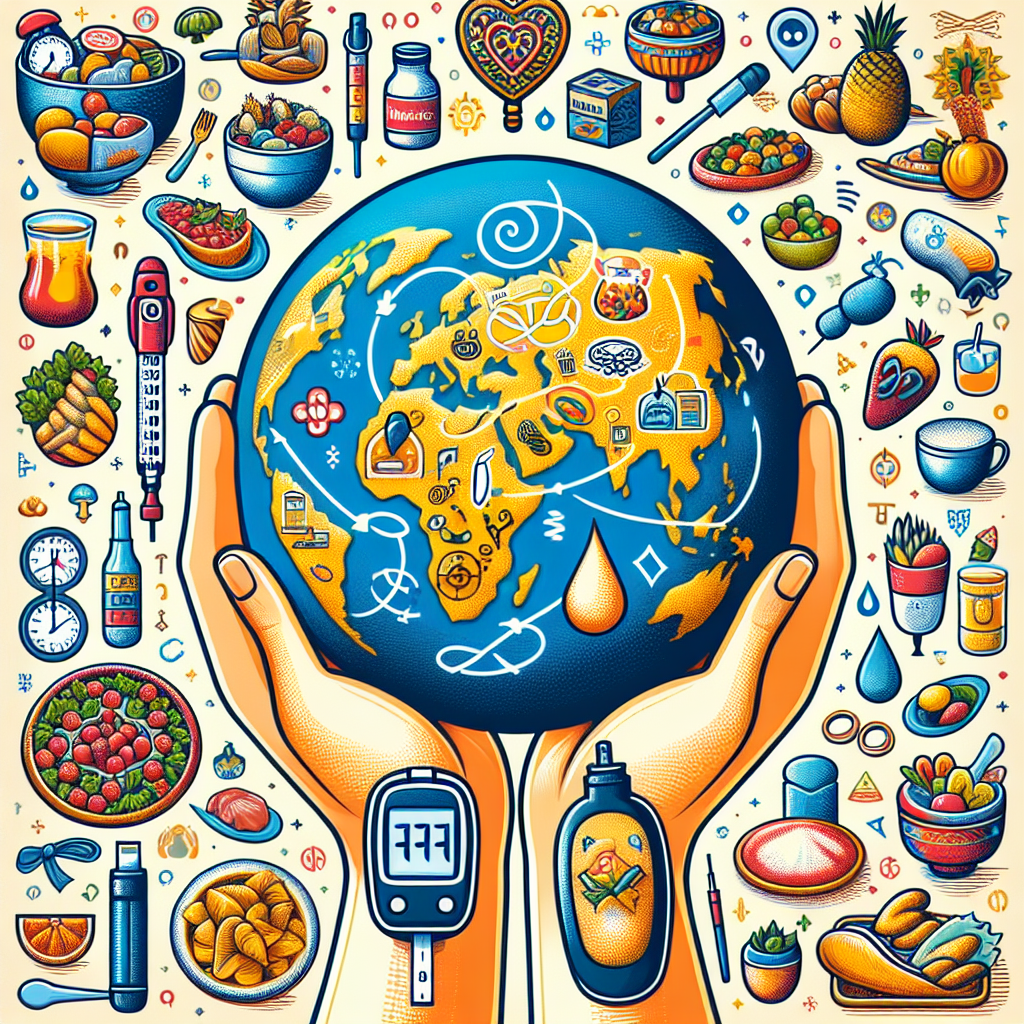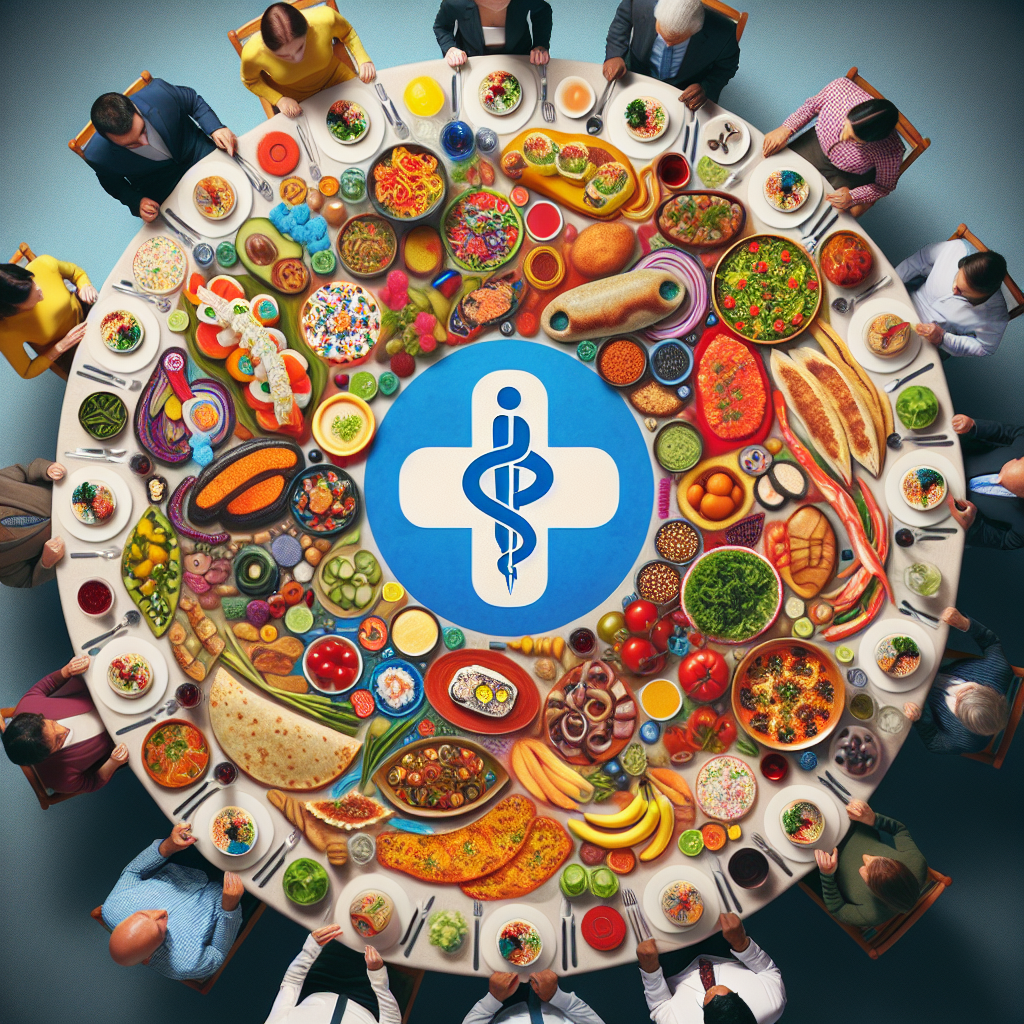Are you a diabetic planning to travel abroad? If so, it’s crucial to be prepared when it comes to managing your diet while exploring new and exciting destinations. In this article, we will explore the importance of dietary management and provide valuable tips on eating smartly as a diabetic abroad. From understanding local cuisine to making informed choices, we’ve got you covered on how to navigate your dietary needs while enjoying the flavors and experiences of foreign lands. So, grab your passport and get ready to embark on a journey of smart eating as a diabetic abroad!
Understanding Diabetes and Dietary Needs
Defining Diabetes
Being diagnosed with diabetes means that your body is unable to properly regulate the levels of glucose in your blood. This can occur for various reasons, such as insufficient insulin production or the body’s resistance to insulin. Diabetes is a chronic condition that requires daily management to keep your blood sugar levels stable and prevent complications.
Importance of Dietary Management in Diabetes
One of the key aspects of managing diabetes is following a well-balanced and healthy diet. Your dietary choices can have a significant impact on your blood sugar levels and overall well-being. By adopting a careful approach to your food intake, you can better control your diabetes and reduce the risk of developing complications.
Typical Food Limitations for Diabetics
As a diabetic, there are certain food limitations that you should be aware of to maintain stable blood sugar levels. Foods high in carbohydrates, especially refined sugars and processed grains, can cause your blood sugar levels to spike rapidly. It is important to limit your intake of sugary drinks, candies, baked goods, and processed snacks. Additionally, high-fat and high-sodium foods should also be consumed in moderation.
Preparation before Travelling Abroad as a Diabetic
Consulting the Physician
Before embarking on your travel adventure, it is crucial to consult your physician or diabetes specialist. They can provide valuable guidance and help you understand how your medications and insulin doses may need adjustments during your trip. Your physician can also provide you with any necessary prescriptions and documentation for traveling with diabetic supplies.
Developing a Travel Dietary Plan
When traveling abroad as a diabetic, it is essential to develop a comprehensive travel dietary plan. This plan should consider the types of foods available in your destination, your dietary restrictions, and mealtime schedules. Planning your meals in advance and making a list of diabetic-friendly food options will help you navigate unfamiliar cuisines and make healthier choices.
Learning about Destination’s Local Cuisine
Researching the local cuisine of your destination is an important step in understanding what foods will be available to you as a diabetic traveler. Familiarize yourself with the typical ingredients, cooking methods, and portion sizes. This knowledge will enable you to make informed choices when dining out or shopping for groceries while abroad.

Interpreting Nutritional Labels while Abroad
Reading Food Labels
When traveling abroad, understanding nutritional labels becomes even more crucial. Reading food labels can provide valuable information about the nutritional content of packaged foods, allowing you to make informed decisions about what to eat. Pay attention to the serving size, total carbohydrates, sugars, and fiber content, as these are essential factors for diabetics to consider.
Understanding International Nutritional Labels
Different countries may have variations in their nutritional labeling systems, which can make it challenging to interpret the information accurately. Take the time to familiarize yourself with the nutritional labeling conventions of your destination country beforehand. This will help you understand the nutrient content and make appropriate choices while shopping for food items.
Identifying Hidden Sugars on Labels
Hidden sugars are often disguised under various names in ingredient lists. When reading food labels, keep an eye out for ingredients such as corn syrup, fructose, dextrose, maltose, and sucrose. These are all types of sugars that can have a significant impact on your blood sugar levels. Being aware of these hidden sugars will help you avoid foods that might negatively affect your diabetes management.
Healthy Travel Snacks for Diabetics
Packing Diabetic-friendly Snacks
When traveling as a diabetic, it is crucial to be prepared with diabetic-friendly snacks. Packing convenient, non-perishable snacks can save you from making impulsive and unhealthy food choices while on the go. Consider packing items like nuts, seeds, low-sugar protein bars, whole fruit, and sugar-free granola bars to keep your blood sugar levels stable between meals.
Low Carb Travel Snacks
Opting for low-carb snacks is a smart choice for diabetics to help maintain stable blood sugar levels. Snacks such as hard-boiled eggs, cheese sticks, beef jerky, and vegetable sticks with hummus are all low in carbohydrates and can be easily packed for travel. These snacks will keep your energy levels up without causing significant spikes in your blood sugar.
High Fiber Snacks for Blood Sugar Management
Incorporating high-fiber snacks into your travel diet can help regulate blood sugar levels and promote healthy digestion. Snacks like kale chips, edamame, chia pudding, and whole grain crackers are all good sources of dietary fiber. They will help you feel satisfied and provide sustained energy throughout your travels.

Navigating Foreign Menus
Understanding Foreign Food Terms
When dining out abroad, it is beneficial to familiarize yourself with common foreign food terms. Understanding terms such as “grilled,” “steamed,” “baked,” and “roasted” can help you identify healthier cooking methods. Additionally, learning words for common ingredients can enable you to make better menu choices and avoid foods that may negatively impact your blood sugar levels.
Identifying Diabetic-friendly Options on Menus
When faced with a foreign menu, look for dishes that incorporate lean proteins, whole grains, and colorful vegetables. Opt for foods that are prepared with minimal added sugars, sauces, or creamy dressings. Seek out grilled or roasted meats, fresh salads, and stir-fried vegetables. Don’t hesitate to ask your server for modifications or substitutions to make the dishes more suitable for your dietary needs.
Asking for Nutritional Information at Restaurants
If possible, inquire about the nutritional information of the dishes when dining out at restaurants abroad. Some establishments may have nutritional content available upon request, which can guide you in making informed decisions about your food choices. Understanding the carbohydrate content, portion sizes, and overall nutritional value of your meals will contribute to better diabetes management.
Smart Strategies to Eat Local Cuisine Abroad
Portion Control Tips
Managing portion sizes is crucial when enjoying local cuisine abroad. Restaurants in different countries often serve larger portions than what you may be accustomed to, which can lead to overeating and difficulty in controlling blood sugar levels. Consider sharing meals, ordering appetizer-sized portions, or asking for a take-out container to save leftovers for another meal.
Identifying Low Glycemic Foods
Low glycemic foods have a minimal impact on blood sugar levels, making them suitable choices for diabetics. Look for foods such as non-starchy vegetables, legumes, whole grains, and lean proteins when exploring local cuisine. These foods are usually digested more slowly, resulting in a slower release of glucose into the bloodstream and more stable blood sugar levels.
Balancing Meals with Protein, Fats, and Carbs
Balancing your meals with the right combination of protein, fats, and carbohydrates is essential for diabetics. Incorporating lean proteins like grilled chicken, fish, or tofu, along with healthy fats from sources like avocados or nuts, can help slow down the digestion of carbohydrates. This balance can aid in maintaining more stable blood sugar levels after meals.

Addressing Alcohol and Sugar-rich Drinks
Effects of Alcohol on Blood Sugar
Alcohol can have a significant impact on blood sugar levels and should be consumed with caution as a diabetic. It can cause hypoglycemia (low blood sugar) and interfere with the liver’s ability to regulate blood sugar. It is advisable to monitor your blood sugar levels before and after consuming alcohol and to limit your intake to moderate amounts.
Choosing Lower-sugar Drinks
When it comes to selecting beverages while traveling, opt for lower-sugar options to help manage your diabetes. Avoid sugary cocktails, sodas, and energy drinks, as they can cause blood sugar spikes. Instead, choose water, unsweetened tea, or sparkling water with a splash of lemon or lime. If you do choose to consume alcohol, stick to light beers, dry wines, or spirits mixed with sugar-free mixers.
Hydration Tips for Diabetics
Staying hydrated is crucial for all travelers, especially for diabetics. Dehydration can lead to increased blood sugar levels and potential complications. Make sure to drink plenty of water throughout the day, especially in warm climates or during physical activities. Carry a reusable water bottle and refill it regularly to ensure you’re staying hydrated while exploring.
Physical Activity and Diabetes Management while Traveling
Importance of Exercise in Blood Sugar Control
Incorporating regular physical activity into your travel plans is highly beneficial for managing diabetes. Exercise helps lower blood sugar levels, increases insulin sensitivity, and promotes overall cardiovascular health. Make time for activities like walking tours, hiking, swimming, or yoga to stay active while exploring your destination.
Ways to Stay Active during Travel
Finding opportunities to stay active while traveling can be relatively easy with a little creativity. Explore your destination on foot, take the stairs instead of elevators, or rent bicycles for sightseeing. Many tourist destinations offer outdoor recreational activities or organized tours that provide opportunities for physical activity. Remember to monitor your blood sugar levels before and after intense workouts to ensure proper glucose management.
Balancing Food Intake with Activity Level
When engaging in physical activities during your travels, it is important to balance your food intake accordingly. Monitor your blood sugar levels before, during, and after exercise to determine if any adjustments are needed. Be prepared to consume additional carbohydrates if your blood sugar drops, and always keep snacks on hand to address any hypoglycemic episodes during your activities.

Coping with Diabetes-related Emergencies Abroad
Recognizing Hypoglycemia and Hyperglycemia
Being able to recognize the symptoms of hypoglycemia (low blood sugar) and hyperglycemia (high blood sugar) is essential for travelers with diabetes. Symptoms of hypoglycemia may include dizziness, sweating, confusion, and irritability, while hyperglycemia can manifest as increased thirst, frequent urination, blurred vision, and fatigue. Familiarize yourself with these symptoms and take appropriate action if an emergency arises.
Handling a Diabetes Crisis while Abroad
In the event of a diabetes-related emergency while abroad, it is important to remain calm and take immediate action. Always carry identification indicating your diabetes diagnosis and emergency contact information. If experiencing severe hypoglycemia or hyperglycemia, seek medical assistance as soon as possible. Familiarize yourself with local emergency numbers and healthcare facilities before you travel.
Carrying Necessary Diabetic Supplies
When traveling as a diabetic, always carry necessary diabetic supplies, including extra insulin, syringes, test strips, and glucose-monitoring devices. Store them properly and carry them in your carry-on luggage to prevent any mishaps due to lost or damaged checked bags. It is also advisable to have a written prescription from your physician to facilitate the transport of your supplies.
Returning Home: Maintaining Healthy Habits
Assessing Blood Sugar Control after Travel
Upon returning home from your trip, it is essential to assess your blood sugar control. Monitor your blood glucose levels closely and consult with your physician to evaluate any changes that may be needed in your diabetes management plan. Reflect on your travel experiences, identify any challenges you faced, and discuss strategies for future trips with your healthcare team.
Continuing Healthy Eating Habits at Home
Maintaining healthy eating habits at home is crucial for managing diabetes and overall well-being. While traveling, you may have encountered new foods and flavors, but it is important to continue incorporating a well-balanced and nutritious diet into your daily routine. Focus on consuming whole foods, lean proteins, and plenty of fruits and vegetables to support stable blood sugar levels.
Consulting with Physician Post-travel
After returning from your trip, schedule a follow-up appointment with your physician to discuss your travel experience and any adjustments needed to your diabetes management plan. Share any challenges or successes you encountered while managing your diabetes on your trip. Your physician can provide ongoing support, make any necessary medication or insulin dosage adjustments, and address any concerns or questions you may have.
By understanding diabetes and your dietary needs, preparing before traveling, interpreting nutritional labels, choosing healthy snacks, navigating foreign menus, and addressing alcohol and physical activity while abroad, you can enjoy your travel experiences while effectively managing your diabetes. Remember to consult your physician, carry necessary supplies, and maintain healthy habits even after returning home. With proper planning and self-care, you can have a fulfilling and enjoyable travel experience while keeping your diabetes under control.


